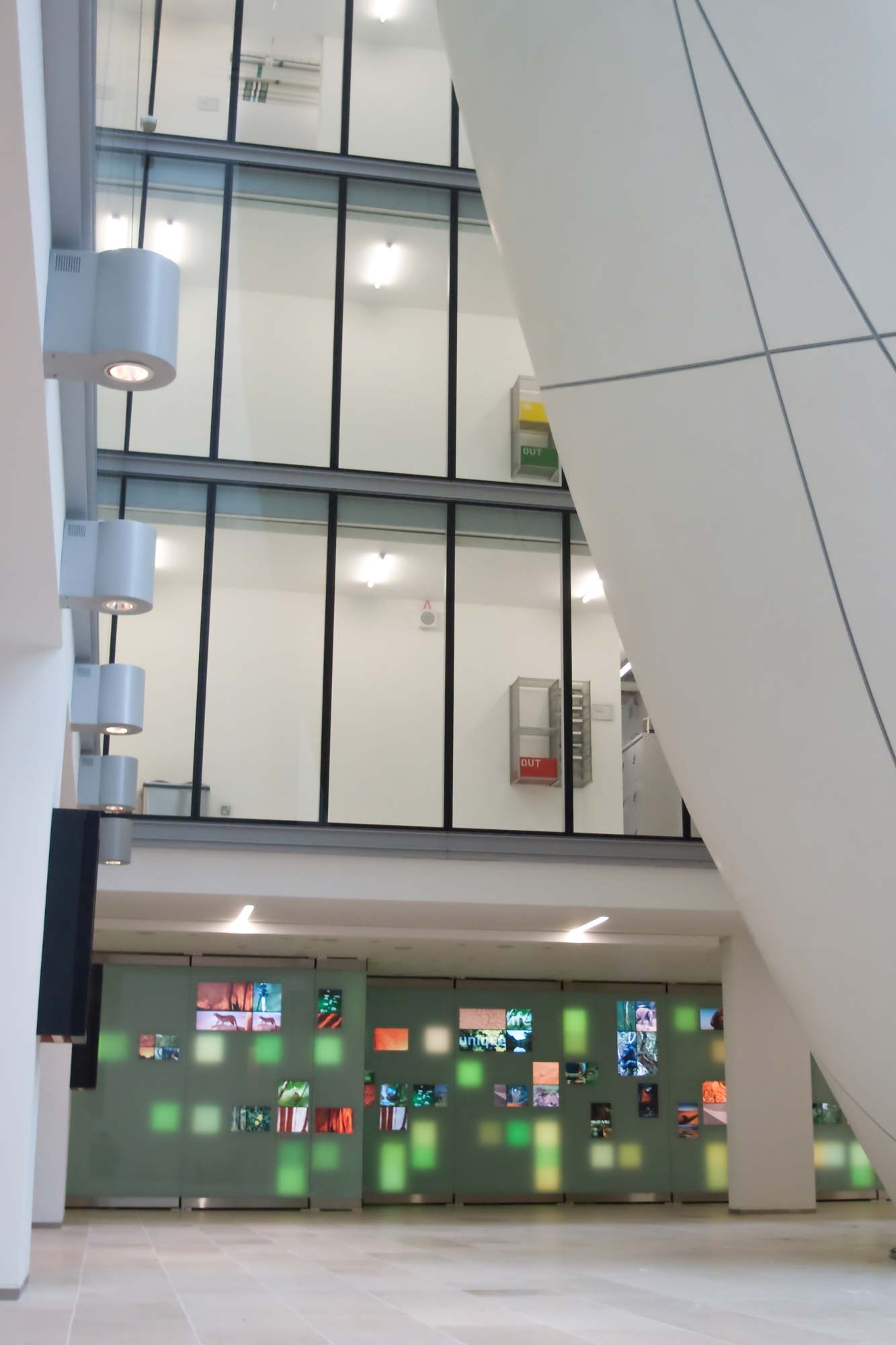Climate Change Wall
September 2009
The Darwin Centre represents the future for the Natural History Museum as a world leader in researching the burning issues facing humans and the natural world.
Working to an ambitious and demanding brief, Clay designed and developed a 31 square-meter interactive wall of thousands of images, videos and detailed case study material that explores the nature and impact of global warming. This mosaic of imagery is arranged by topic and hue, and is then animated by the constant activity of visitors.
As a metaphor for the processes involved in global warming, the wall itself reacts to the volume and proximity of human activity along its length. Waves of activity cause waves of destructive imagery to replace the positive natural state of the wall. In combination with this 'ambient' activity (which is themed and changes theme during the day) the wall invites nearby visitors to approach it, and to delve deeper into touch screen case studies which explore the issues within the context of the Natural History Museum's work.
The Interactive Wall was developed in a way that allows to the Museum to update much of the content themselves, without having to commission a proprietary content management system. The modular and external nature of the content structure also means there are opportunities to connect the wall to other museum systems in the future.
The TerminalsVisitors can explore some of the latest work by the museum's scientists using terminals that appear behind the glass when their proximity is detected.
The six interactive case studies feature real-time 3D and 2D animations that both visualise the topics and offer visitors control over key processes themselves.
This self-discovery and control of the narrative encourages deeper engagement with the subject matter.

Exhibition Designers:
At Large